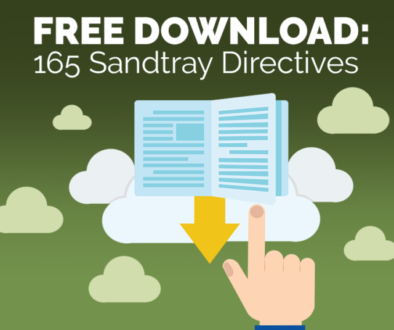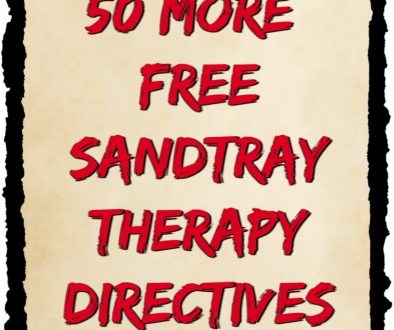Cultivating Gratitude
Using the Sandtray to Cultivate Gratitude
We hear the word gratitude, or variations of this this term, often…especially as we are approaching the holiday season.
One need only stroll through the local craft store or check out a fall-themed Pinterest board to see myriad slogans on distressed wood signs…“Give Thanks”, “Attitude of Gratitude”, “Start each day with a thankful heart”, and so on…
But what is gratitude, really?
Gratitude is so much more than just being thankful one season of the year.
Gratitude is a feeling, an experience, but also an outward expression; a behavior, an exercise, and a mindset.
The Greater Good Science Center has an amazing article discussing gratitude and it’s benefits on social-emotional wellness and even physical health.
Within this article, scientific expert Robert Emmons defines gratitude as having two components “affirmations of goodness” and “recognizing that the sources of this goodness are outside of ourselves.”
Basically, the practice of gratitude is about deliberately taking notice of the positive things (experiences, attributes, gifts, acts of kindness, strengths, basically anything and everything that makes daily life pleasurable) and acknowledging, or expressing, our thankfulness for these outwardly.
According to Emmons, when we practice gratitude, it allows us to
• Celebrate the present
• Block toxic emotions (envy, resentment, regret, depression)
• Become more stress-resilient, and
• Strengthen social ties and self-worth
Why does this matter?
Why should we take the time to think about the positive?
This simple daily practice of shifting our mindset can have tremendous positive outcomes in our relationships with others, with ourselves, and with the world around us.
More than just taking note of all the positive things that make our days and lives easier, happier, and more beautiful, we can also apply this mindset to the negative things that arise in everyday life.
Suddenly, a conflict with a friend or spouse becomes a learning opportunity, a chance to experience their perspective and foster increased trust and intimacy.
A dreary, rainy Saturday becomes an opportunity to highlight our gratitude for the home that keeps us warm, extra time to spend one-on-one with our kids/families, or to binge that Netflix show that we just haven’t made time for.
A mistake at work becomes a chance to learn a new skill or bring awareness to an area we didn’t know that we needed to improve.
When we choose to refrain from negative self-talk or shaming (i.e. “I am so stupid, how could I have made that mistake, I’m worthless”), and instead adopt a growth mindset (“I hadn’t thought of it that way before, I have learned something new and valuable, and now I will be even better at this job/task”) we increase self-esteem and resiliency, effectively reducing depressive and anxious symptoms and the cycle of negative thoughts and cognitive distortions.
When we can view minor hiccups through the lens of gratitude, it makes us more loving, nurturing, and more tolerant of those around us. How can you beat those outcomes?
So, how do you cultivate a daily gratitude practice using sandtray therapy??
We already know that sandtray is a powerful tool for making connections, healing trauma, regulating difficult emotional and physical responses in the body, exploring social dynamics, and developing essential skills.
Much like starting a gratitude journal or spending time meditating on these areas, we can use the sandtray to help explore and cultivate gratitude using the power of neuroscience. When we utilize miniatures, symbols, and metaphors in the sand, it allows the right and left sides of the brain to talk to each other, making meaningful connections and allowing for real healing and growth.
So, what does this look like in practice?! Glad you asked!
We cannot give to our clients what we do not have ourselves, so we have developed a resource with directives to help YOU as a therapist bring more gratitude into your daily life and practice as well as directives for your clients to cultivate that gratitude mindset.


